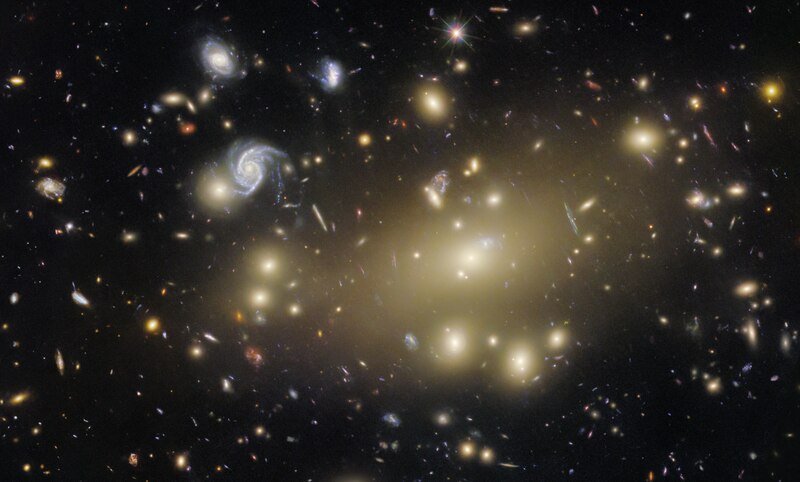Hubble Space Telescope Reveals Dark Matter Dynamics in Abell 209 Galaxy Cluster

The Hubble Space Telescope, a collaborative project between NASA and the European Space Agency (ESA), has unveiled intriguing insights into the elusive nature of dark matter through its latest observations of the galaxy cluster Abell 209. This significant finding, which illustrates the profound influence of dark matter on cosmic structures, was announced in a report published on October 15, 2023.
Dark matter, an invisible substance that constitutes approximately 27% of the universe, exerts a gravitational pull that affects the motion of galaxies and the bending of light. This phenomenon, known as gravitational lensing, allows astronomers to infer the presence of dark matter by observing how light from distant objects is distorted as it passes near massive clusters of galaxies.
The Hubble observations of Abell 209 highlight the gravitational lensing effect, showcasing how the cluster’s mass warps the fabric of spacetime. According to Dr. Emily Chen, an astrophysicist at the Space Telescope Science Institute, "The lensing observed in Abell 209 not only provides evidence of dark matter's existence but also offers a glimpse into its distribution within the cluster."
Abell 209 is a massive galaxy cluster located approximately 1.1 billion light-years from Earth. It serves as a natural laboratory for studying dark matter due to its significant gravitational field. In the recent analysis, researchers utilized advanced imaging techniques to capture the intricate details of the light distortion caused by the cluster's mass. The findings were detailed in a study published in the Astrophysical Journal on October 10, 2023, co-authored by Dr. Mark Robinson, a professor of astrophysics at Stanford University.
"Understanding the distribution of dark matter in clusters like Abell 209 is crucial for piecing together the evolution of the universe," Dr. Robinson noted. "These observations allow us to refine our models of how galaxies form and interact over cosmic time."
The implications of this research extend beyond mere academic interest; they contribute to a broader understanding of the universe's structure and the role of dark matter in cosmic evolution. According to a report by the European Southern Observatory, gravitational lensing is one of the most effective methods to map dark matter, providing insights that challenge existing theories about the universe's composition and behavior.
As scientists continue to analyze the data from Hubble, the findings from Abell 209 may inspire new questions about the nature of dark matter and its impact on galaxy formation. The ongoing research in this field is critical, especially as physicists seek to reconcile dark matter theories with observations from other astronomical phenomena.
Looking ahead, the upcoming launch of the James Webb Space Telescope is expected to enhance our understanding of dark matter further. "The synergy between Hubble and Webb will enable us to explore even deeper into the universe, potentially uncovering more secrets about dark matter and its influence on galaxy clusters," Dr. Chen stated.
In conclusion, the Hubble Space Telescope's revelations about the Abell 209 galaxy cluster not only shed light on the hidden forces that shape our universe but also pave the way for future explorations into the enigmatic world of dark matter, which continues to be one of the most significant challenges in modern astrophysics.
Advertisement
Tags
Advertisement





